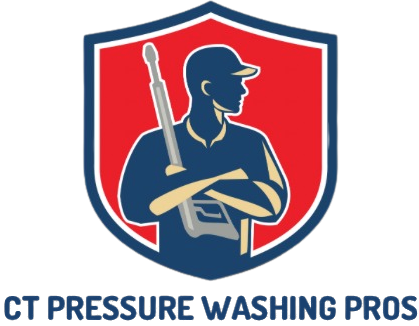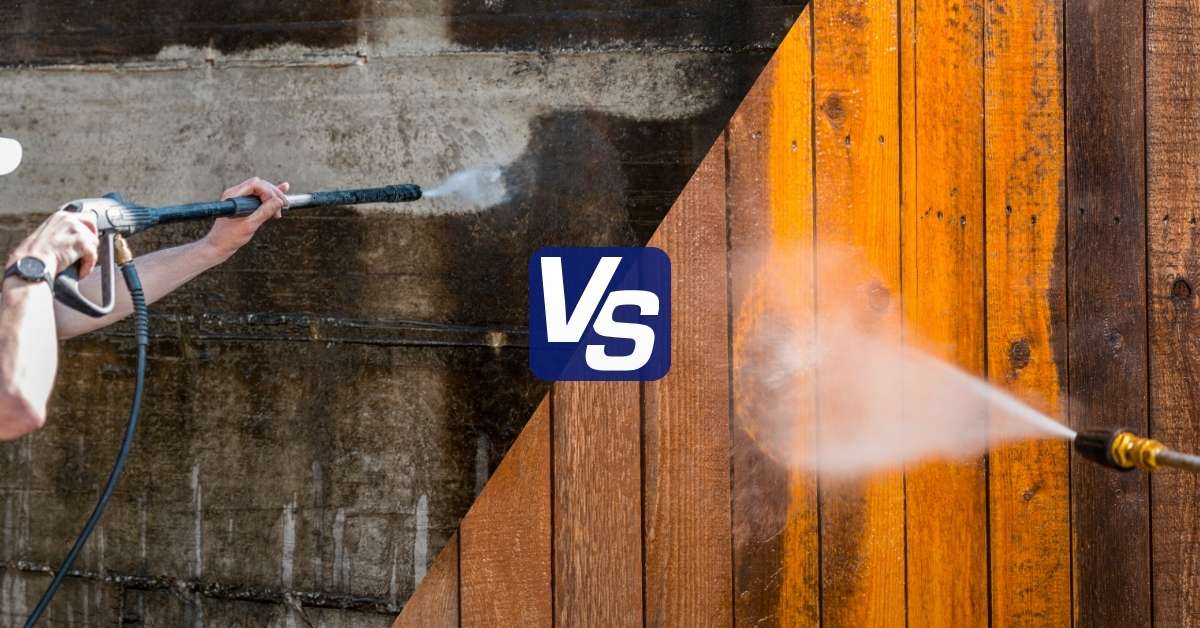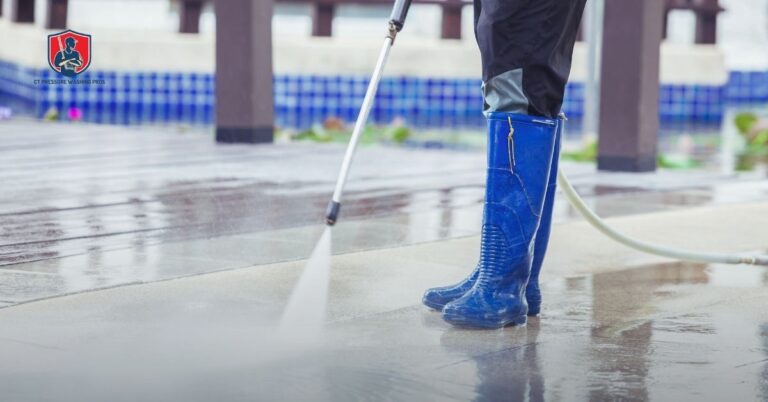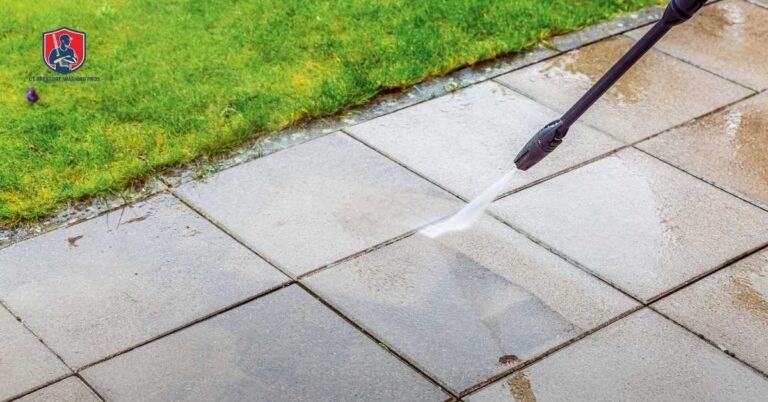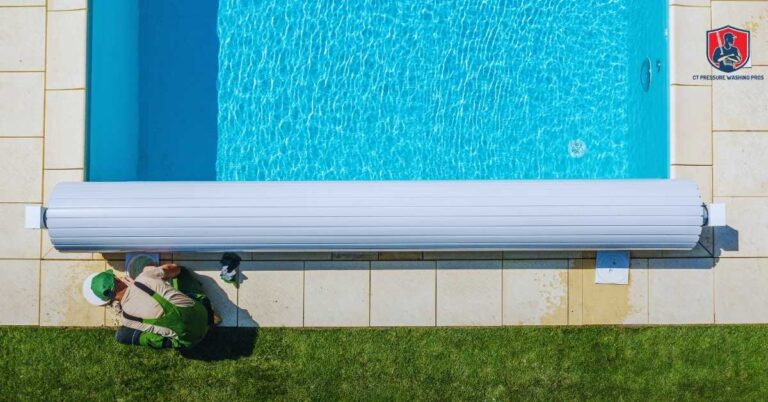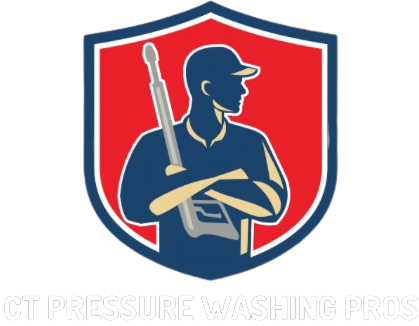After a few months of rain, your siding might look tired, the roof could have streaks of algae, and the driveway may be covered in dirt. Cleaning it all seems simple, but there’s a catch—too much pressure can strip paint or crack shingles, while too little won’t remove stubborn grime. That’s why people turn to pressure washing or soft washing.
Both methods promise a cleaner home, but they work in different ways. One uses high-powered water, the other combines low pressure with cleaning solutions. The real question is: which one keeps your home safe while getting it truly clean?
In the next sections, we’ll explain each method clearly, compare them side by side, and help you choose the safest and most effective option for your home.
Table of Contents
What is Pressure Washing?
Pressure washing is a cleaning method that uses a powerful stream of water to blast away dirt, mold, mildew, and grime from surfaces. Instead of scrubbing by hand, the high-pressure water does the heavy lifting, making it much faster and more effective for tough stains and large areas.
How Pressure Washing Works
A pressure washer connects to your water supply and uses a motor to pump out water at a much higher pressure than a garden hose. This pressure—measured in pounds per square inch (PSI)—can range from 1,500 to over 3,000 PSI depending on the machine and job. The strong spray cuts through built-up dirt and debris on hard surfaces like driveways, sidewalks, patios, and brick walls.
Most pressure washers also let you adjust the nozzle to control the spray pattern and intensity, so you can use a wide spray for large areas or a narrow stream for stubborn spots.
Advantages of Pressure Washing
- Fast cleaning for large areas: Perfect for driveways, patios, decks, and sidewalks where dirt builds up quickly.
- Removes tough stains: Cuts through mold, algae, oil stains, and grime that regular cleaning can’t handle.
- Restores curb appeal: Makes old concrete and brick look fresh without repainting or resurfacing.
- Adjustable settings: Many machines let you control pressure levels for different surfaces.
- Saves time and labor: Much quicker than scrubbing by hand or using a garden hose.
Risks of Pressure Washing
- Surface damage: High pressure can strip paint, dent siding, or erode wood if used incorrectly.
- Water intrusion: Strong spray can push water under siding or shingles, leading to rot or mold issues.
- Not ideal for delicate areas: Roofs, old brick, and painted surfaces may not withstand the force.
- Safety concerns: Improper handling can cause injuries due to the powerful spray.
What is Soft Washing?
Soft washing is a gentle cleaning method that uses low-pressure water combined with special cleaning solutions to remove dirt, algae, mold, and mildew. Instead of relying on force, it uses cleaning agents to break down grime and kill organic growth at the root, so surfaces stay cleaner for longer.
How Soft Washing Works
Soft washing systems spray water at a much lower pressure—usually under 500 PSI—making it safe for roofs, siding, fences, and other surfaces that might be damaged by high pressure. The cleaning solution does most of the work, soaking into stains and organic growth before being rinsed away with a gentle stream of water.
This method is especially popular for cleaning roofs because it removes algae and prevents it from growing back without loosening shingles or causing leaks.
Advantages of Soft Washing
- Safe for delicate surfaces: Perfect for roofs, siding, painted wood, and older brick.
- Kills mold and algae at the root: Cleaning solutions stop growth rather than just removing surface stains.
- Longer-lasting results: Surfaces often stay cleaner for months because spores are eliminated.
- Lower water pressure: Reduces the risk of surface damage and water intrusion.
- Improves home appearance: Restores the look of roofs and siding without harsh force.
Risks of Soft Washing
- Chemical handling: Requires proper safety precautions and eco-friendly solutions to avoid harm to plants or pets.
- Longer prep and rinse time: Cleaning solutions need time to work before rinsing, so it can take longer than pressure washing.
- Not ideal for thick grime: Heavy oil stains or packed-on dirt may still need high-pressure cleaning.
- Cost of solutions: Cleaning agents add to the overall expense compared to using water alone.
Key Differences Between Pressure Washing and Soft Washing
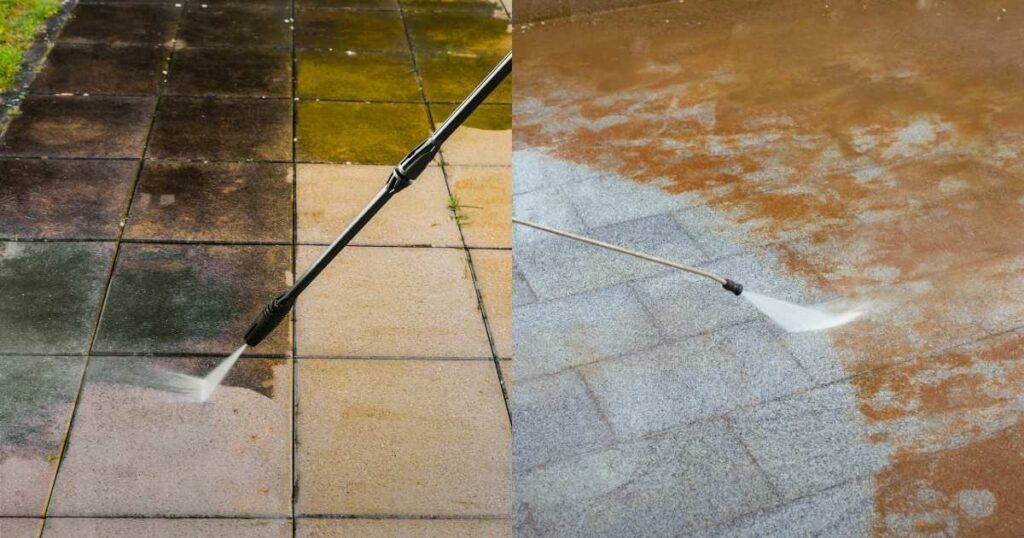
Although both methods clean your home’s exterior, they work in very different ways. Here are the five main differences to help you choose the right approach.
1. Cleaning Method
- Pressure Washing: Relies on the force of high-pressure water to blast away dirt and stains.
- Soft Washing: Uses low-pressure water combined with cleaning solutions to break down and kill mold, algae, and mildew.
2. Surface Safety
- Pressure Washing: Works well for hard surfaces like concrete and brick but can damage softer materials if misused.
- Soft Washing: safer for delicate surfaces such as roofs, siding, and painted wood because it avoids high pressure.
3. Results and Longevity
- Pressure Washing: Removes surface dirt quickly, but doesn’t always stop mold or algae from coming back.
- Soft Washing: Cleans and treats the surface, reducing the chance of regrowth for longer-lasting results.
4. Environmental Impact
- Pressure Washing: Uses only water, but in large amounts; runoff may carry debris into soil and drains.
- Soft Washing: Uses fewer gallons of water but adds cleaning solutions, so eco-friendly options are important.
5. Cost and Efficiency
- Pressure Washing: Often faster for large, tough areas but may require frequent cleaning because it doesn’t kill growth.
- Soft Washing: May take longer due to dwell time but often means fewer cleanings over time.
Which Method is Safer for Your Home?
Choosing the safer option isn’t about picking one method over the other every time. It’s about matching the cleaning method to the surface, problem, and long-term results you want.
Here’s how to break it down:
1. Look at the Surface Type
- Soft Washing: Best for anything that can be damaged by force—roofs, siding, wood decks, painted walls, and older brick.
- Pressure Washing: Works for solid, durable surfaces like concrete, pavers, metal fences, and stone walkways.
2. Consider the Problem You’re Solving
Mold, algae, or mildew?
Soft washing kills growth at the root, so it doesn’t come back quickly.
Oil stains or years of grime?
Pressure washing’s power is better for blasting away stubborn dirt.
3. Think About Long-Term Results
Soft washing often keeps surfaces cleaner longer because it removes the source of growth. In comparison, pressure washing may need to be repeated sooner, especially in humid areas where algae grows fast.
4. DIY or Call in the Pros?
If you’re cleaning a small patio, driveway, or a ground-level area, doing it yourself can work fine—especially if you understand how to adjust the water pressure and use the equipment safely. But when it comes to bigger jobs like roofs, second-story walls, or areas near landscaping and delicate surfaces, hiring a professional is the smarter move. They know how to clean thoroughly without causing damage and often use eco-friendly cleaning solutions that keep your plants and home safe.
Tips for Homeowners Choosing Between the Two
Before you decide how to clean your home’s exterior, a few simple tips can help you pick the right method and avoid costly mistakes.
- Check the surface first: Roof shingles, wood siding, and painted walls usually need soft washing, while concrete driveways, brick patios, and stone paths can handle pressure washing safely.
- Match the method to the problem: Heavy dirt or oil stains often need the power of pressure washing. Mold, algae, or mildew respond better to soft washing because it kills growth at the root.
- Think about long-term results: Soft washing typically keeps surfaces clean longer since it removes the source of growth, while pressure washing may require more frequent cleaning.
- Consider safety and experience: High-pressure equipment can cause damage or injuries if used incorrectly. If you’re unsure, professional help is the safer choice.
- Weigh cost and convenience: DIY works for small, simple jobs. For bigger or more delicate projects, pros bring the right tools, solutions, and skills to save you time and reduce risk.
Conclusion
Keeping your home’s exterior clean comes down to choosing the right method for the job. Pressure washing delivers speed and power for tough surfaces, while soft washing offers gentle, longer-lasting cleaning for delicate areas. The best choice depends on what you’re cleaning, the results you want, and whether you tackle it yourself or bring in professionals. By matching the method to the need, you protect your home, save time, and keep it looking its best year-round.
